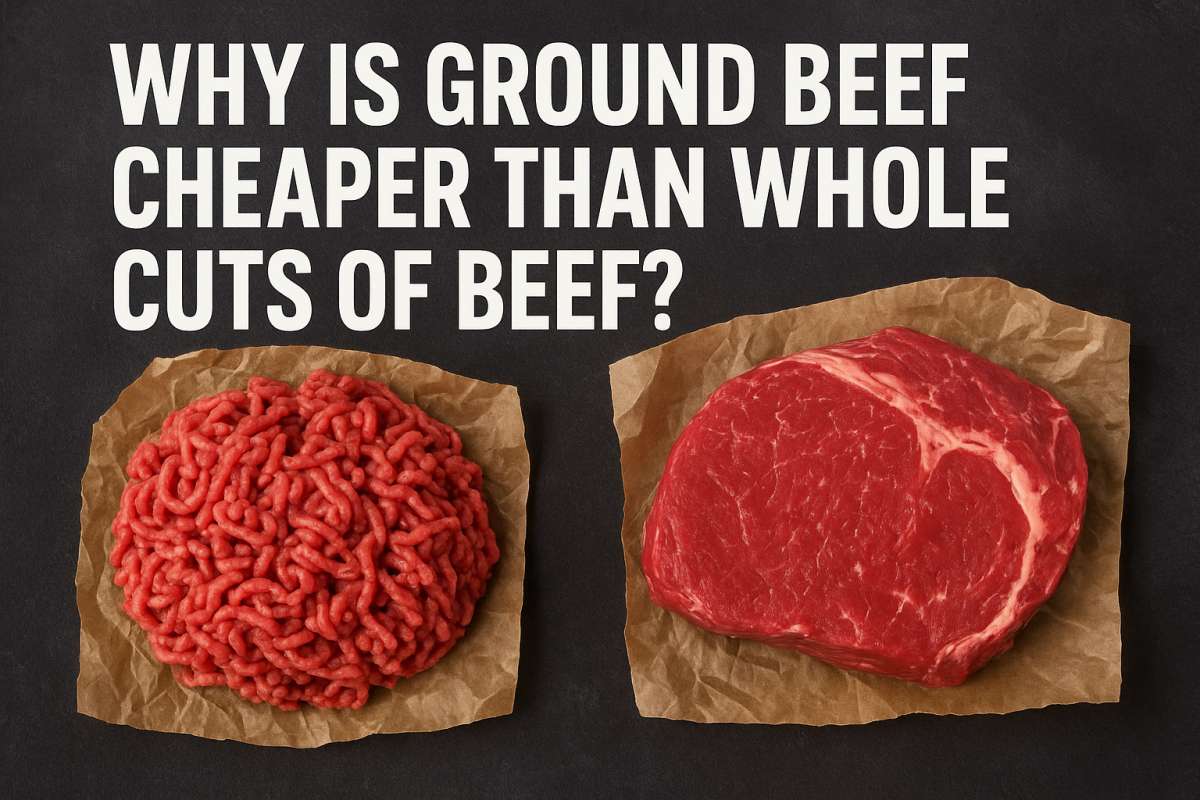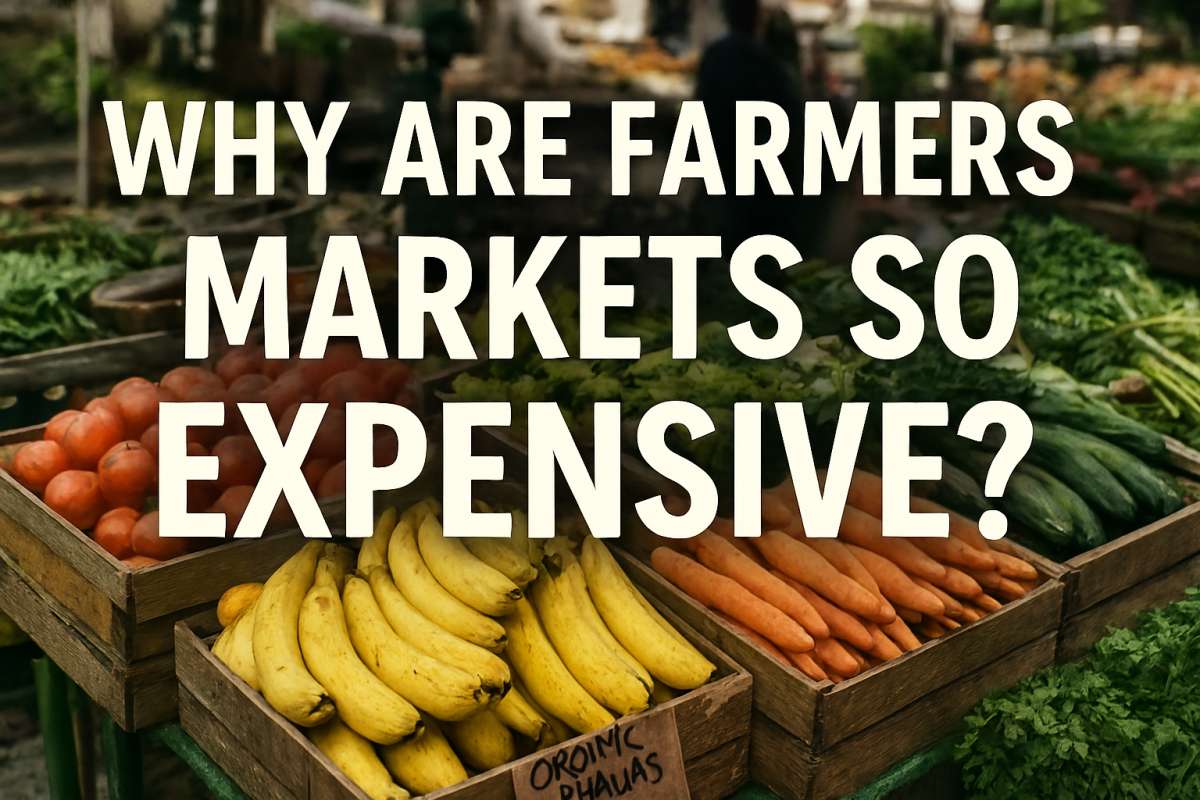Why Is Ground Beef Cheaper Than Whole Cuts of Beef?

Ground beef is cheaper than whole cuts of beef because it’s made from trimmings, lower-grade cuts, and leftover pieces that are blended together rather than premium muscle cuts like steak or roast. It also requires less precision in butchering and can include fattier portions that cost less to process. Simply put, you’re paying less because ground beef comes from more economical parts of the cow and involves mass processing that reduces costs.
Understanding the Price Difference Between Ground Beef and Whole Cuts
When you walk into a grocery store, you’ll notice that ground beef is almost always priced lower than steaks, roasts, or other whole cuts of beef. Many people wonder if this means ground beef is inferior, less nutritious, or simply less desirable. The truth lies in how different cuts are sourced, processed, and valued by the meat industry.
Ground Beef Comes from Less Expensive Parts of the Cow
Whole cuts like ribeye, sirloin, or tenderloin come from prime muscle sections of the cow that are tender and flavorful. These parts are in limited supply, so they command higher prices.
Ground beef, however, is typically made from:
- Trimmings left over after the prime cuts are removed
- Less tender sections such as chuck, round, or brisket
- Fatty portions that would otherwise go unused
Since these pieces are not as in-demand individually, they’re collected and ground together to create a product that’s both versatile and affordable. This use of less premium parts directly lowers the overall cost per pound.
Processing and Labor Costs Are Lower
Cutting steaks and roasts from a carcass requires skilled butchers, precision slicing, and time-consuming preparation. Each steak must be uniform in thickness and properly trimmed, adding to labor costs.
In contrast, ground beef production is faster and more automated. The trimmings are fed through a grinder, mixed for consistency, and packaged in bulk. This process dramatically reduces labor time and waste, leading to cheaper pricing at retail.
Fat Content Influences the Price
The fat content of ground beef is another factor that affects its cost. Higher-fat blends – such as 80/20 or 70/30—are usually less expensive than leaner blends like 90/10 or 93/7. That’s because fat is cheaper than lean meat, and fatter trimmings are easier to come by.
Whole cuts, especially lean ones like tenderloin or top sirloin, contain less fat and require more careful butchering. The balance between fat and lean tissue affects both texture and taste – but also price.
Supply and Demand Play a Major Role
Whole cuts of beef are limited by the anatomy of the animal. A cow only has a few pounds of tenderloin or ribeye, but it can yield dozens of pounds of meat suitable for grinding.
Because steaks and roasts are more sought after for special meals or restaurants, demand keeps their prices high. Ground beef, being a staple in everyday cooking (like burgers, tacos, or casseroles), benefits from high production volumes and competitive pricing, making it cheaper for consumers.
Ground Beef Can Include Multiple Cows in One Batch
Whole cuts come from a single animal, but ground beef is often made by blending meat from several cows to maintain consistency in texture and fat ratio. This large-scale blending allows processors to standardize quality and lower costs through bulk production.
While this might sound concerning to some, strict food safety regulations ensure the final product is safe to consume. Still, the mass-production nature of ground beef contributes to its affordability.
Packaging and Shelf Life Differences
Packaging also impacts pricing. Whole cuts like steak or brisket require more protective packaging and often come in smaller quantities, increasing packaging costs.
Ground beef, on the other hand, is usually sold in bulk packages or vacuum-sealed rolls, reducing per-unit packaging expenses. Moreover, ground beef moves off shelves quickly due to high demand, minimizing storage and spoilage losses.
Grade and Quality Classification
Beef is graded based on marbling, texture, and age of the animal – with Prime, Choice, and Select being common grades. Whole cuts from the Prime or Choice category are much more expensive due to superior flavor and tenderness.
Ground beef, however, can include a mix of trimmings from different grades, often leaning toward Select or ungraded cuts. This mixture makes it cheaper without necessarily compromising too much on taste when cooked properly.
Consumer Perception and Market Pricing
Another factor is how consumers perceive different cuts. Steaks are often viewed as luxury or special-occasion foods, while ground beef is seen as a budget-friendly staple.
Because of this perception, stores and suppliers set prices strategically. Steaks and roasts are marketed with premium labeling, while ground beef is promoted for affordability and versatility. This pricing strategy reinforces the gap between the two products.
Ground Beef Maximizes Efficiency for Producers
From a business perspective, ground beef helps meat processors reduce waste. Every cow yields trimmings that may not be visually appealing or easy to sell as individual cuts. Grinding them allows producers to turn potential waste into a profitable product.
This efficiency benefits both the supplier (through reduced waste) and the consumer (through lower prices). It’s a win-win situation that keeps the meat industry sustainable and cost-effective.
Nutritional Value Isn’t Always Lower
Many people assume that cheaper means less healthy, but that’s not always the case. Ground beef can be just as nutritious as whole cuts when chosen wisely.
Lean ground beef provides a rich source of protein, iron, zinc, and B vitamins. However, because it can contain more fat, consumers should check the lean-to-fat ratio and opt for leaner blends when health is a priority.
Choosing the Right Ground Beef for Your Needs
When buying ground beef, you’ll see different labels like 80/20, 85/15, or 90/10, which represent the ratio of lean meat to fat.
- 80/20: Best for burgers; juicy and flavorful
- 85/15: Good balance for tacos or casseroles
- 90/10 or 93/7: Leaner option for healthier meals
Choosing the right type based on your recipe can help you enjoy quality flavor at the best possible price.
Final Thoughts: The True Value of Ground Beef
Ground beef remains one of the most versatile and economical sources of protein. It’s cheaper not because it’s “bad” meat, but because it efficiently uses every part of the cow that might otherwise go to waste.
From trimmings to automation, from market demand to packaging efficiency – every factor contributes to its lower price point. The next time you see that price difference in the store, you’ll know it’s a result of smart processing and practical economics, not necessarily lower quality.








